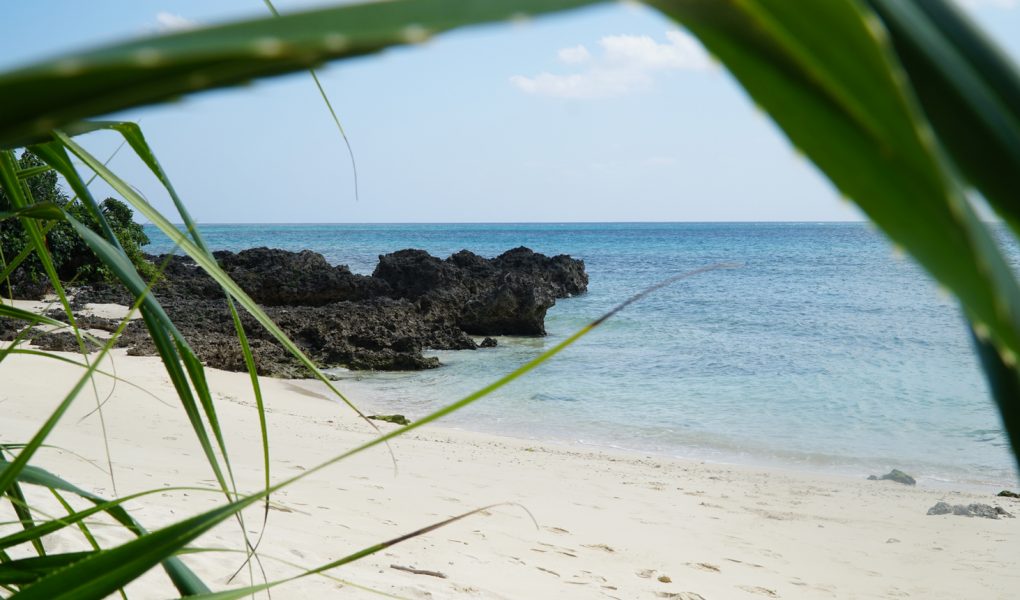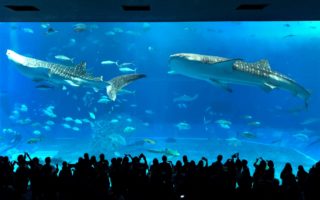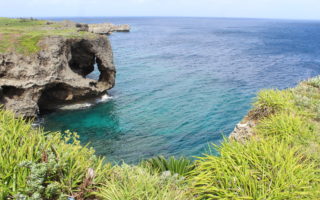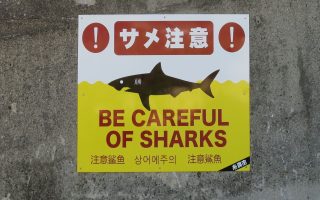Miyako island is a paradise island sprinkled with hibiscus and lilies, perfect white sand beaches, surrounded by turquoise water with sea turtles and a rich coral life. The island has a Japanese-style Hawaii feel to it, but with much fewer tourists and a much more authentic local life.
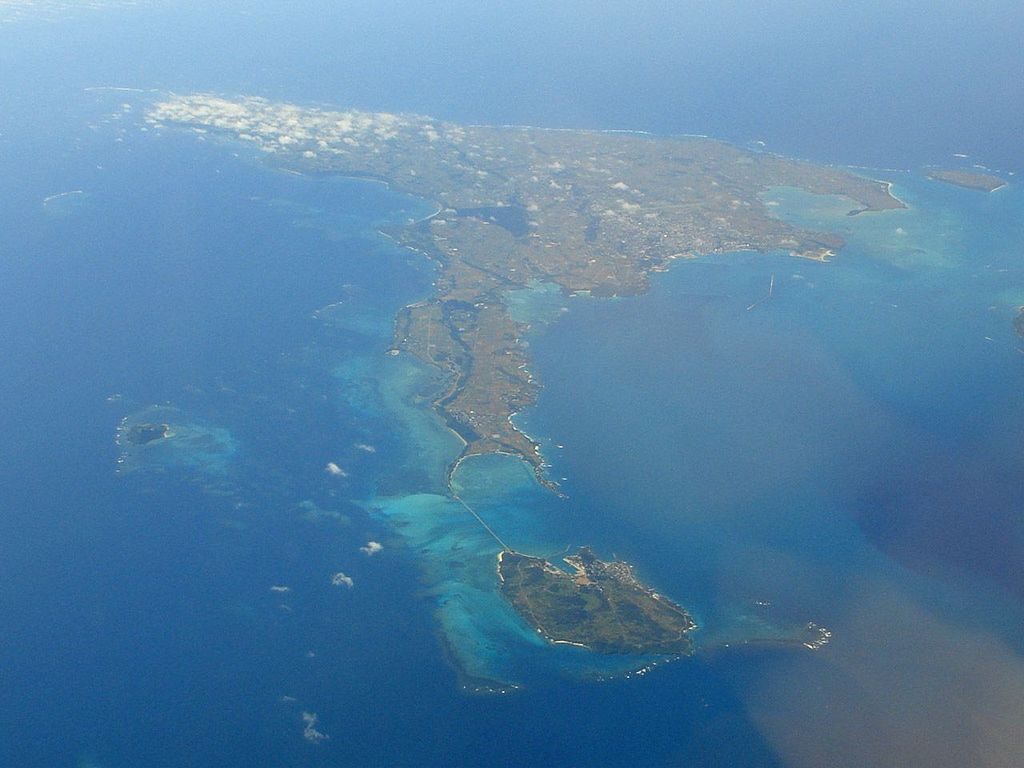
Facts about Miyako Island
Size: 158,9 km²
Population: 51’449 (2019)
Airport: MMY
Biggest attraction: stunning beaches!
Production: sugar cane and tobacco
Photo by 663highland. CC BY-SA 4.0.
Miyako Island (Miyakojima) is the main island of the Miyako island group. It is connected to the neighbouring islands of Kurima, Irabu and Ikema by bridges. The islands airport (MMY) functions as the main entry point for most visitors to Miyakojima. The main attraction on Miyako island is the pristine beaches and great snorkeling. The beaches here are amongst the most beautiful in all of Okinawa.
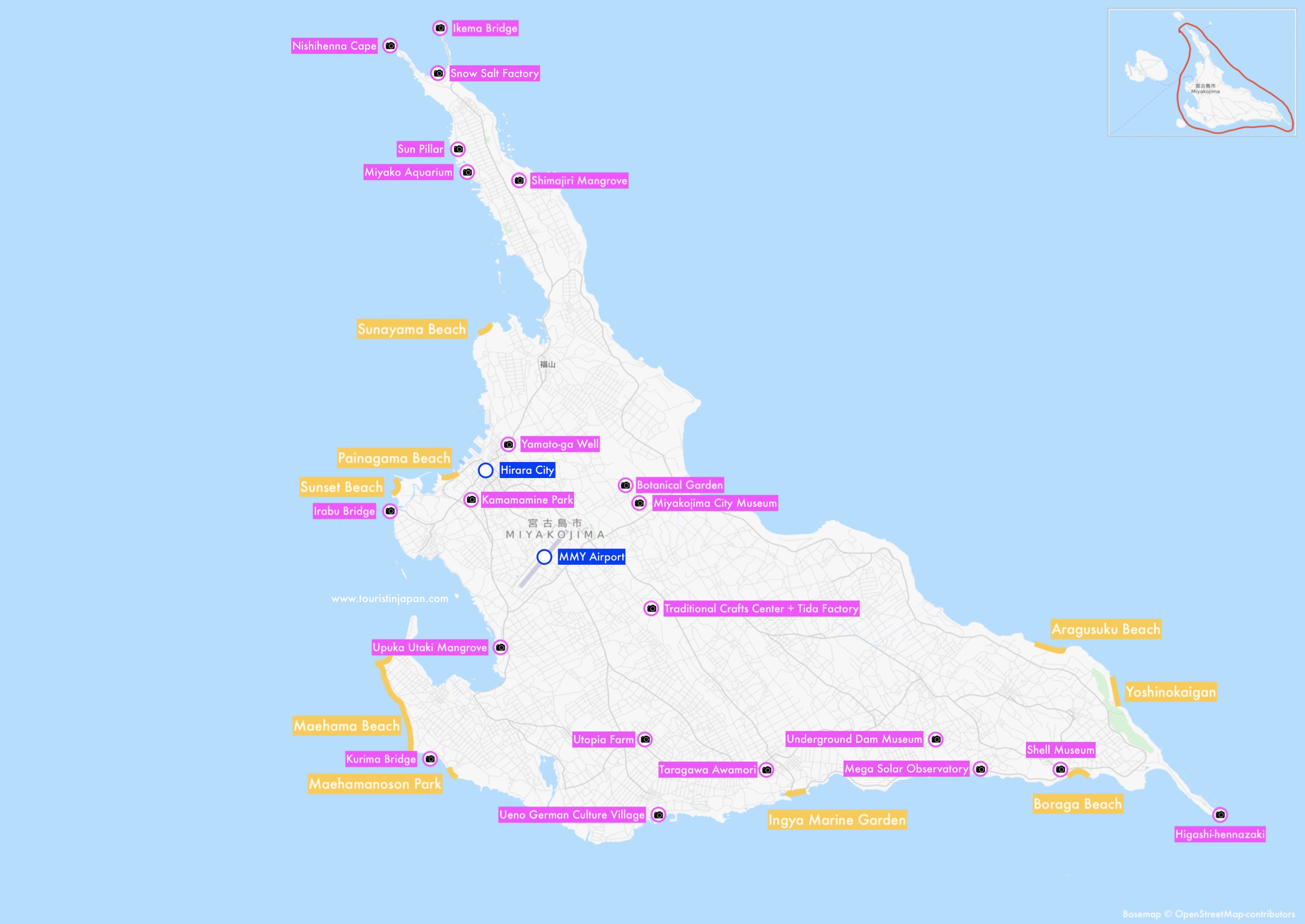
Beaches of Miyako Island
Miyako island has so many beaches to choose from, that it can feel a little overwhelming. All of them are stunning! The list below describes some of the nicest and easiest accessible beaches on Miyako island. You can also check out the list of beaches in all the Miyako islands which includes Kurima, Irabu and Ikema islands. It’s also recommended to read the article on beach safety in Okinawa.
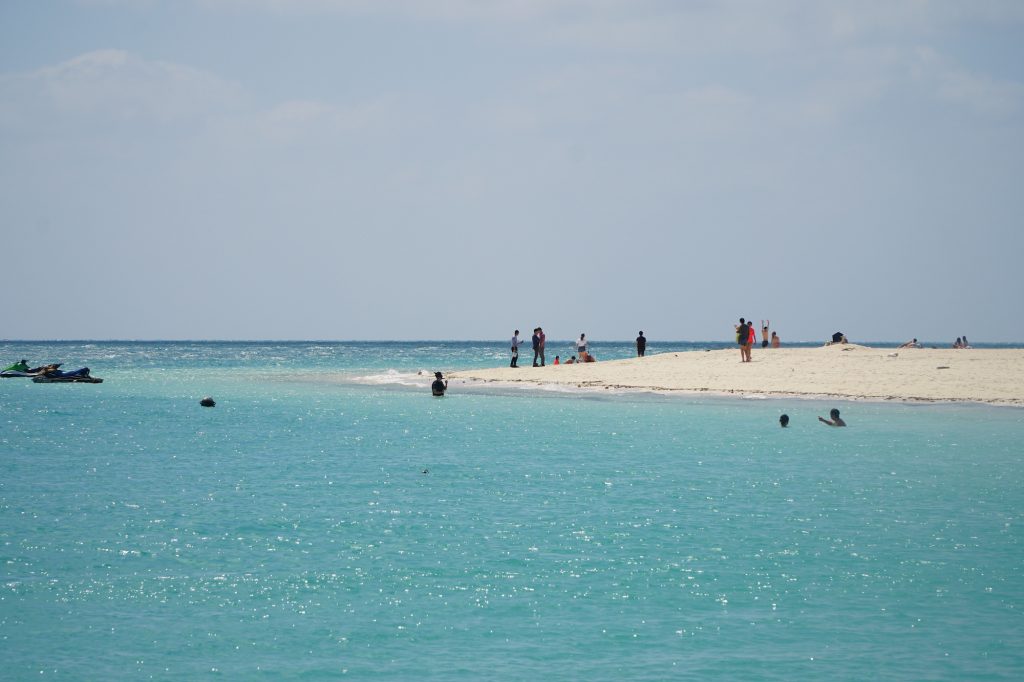
Maehama Beach
Maehama beach, located with a view of Kurima Island, is one of the most iconic beaches on Miyakojima.
The white, sandy beach is 7km long, so despite being the most visited beach on the island, you are likely to find some privacy.
Facilities: Showers, Toilets, Parking
Photo © touristinjapan.com
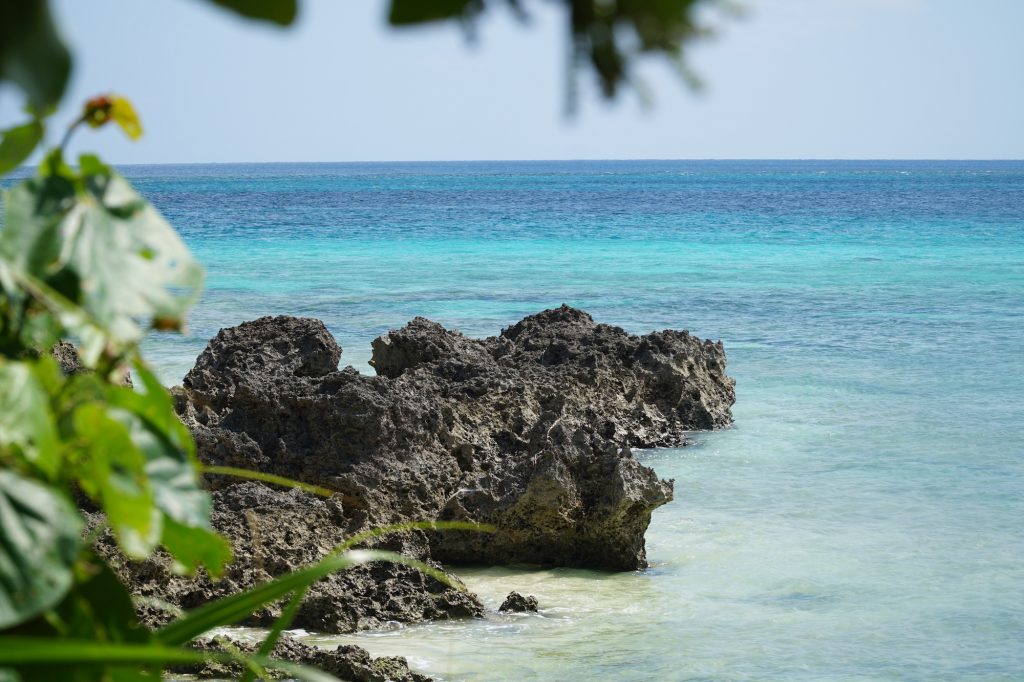
Maehamanoson Park
This tiny stretch of beach, located right next to Kurima bridge, on the Miyako-side, is hardly ever mentioned anywhere in the island guides. However, it has a unique combination of sandy beach, rocky features, natural shade by the fresh green vegetation, clear waters, high chances of sea turtles and a view of Kurima bridge. It really has everything.
Facilities: Toilets, Parkings
Photo © touristinjapan.com
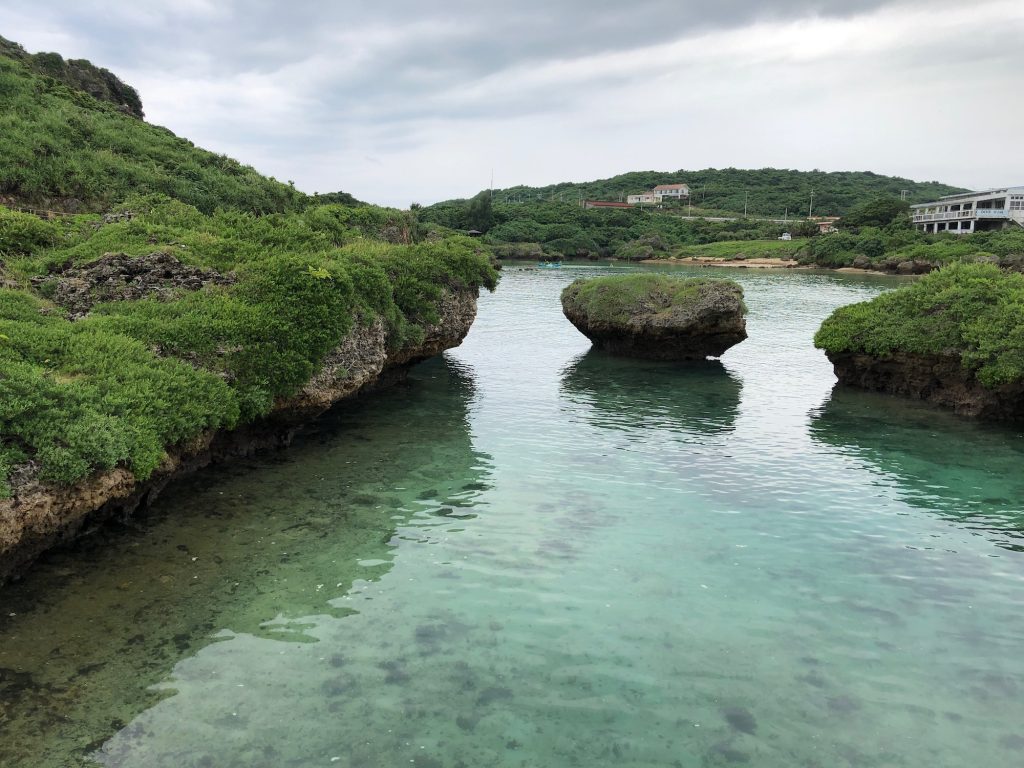
Imgya Marine Garden
Imgya Marine Garden is a small, protected area of water (almost like a natural harbor) and is ideal for snorkeling – especially for beginners. There are also some beautiful walking trails which can be enjoyed here. The location can be a little tricky to find – there are two beaches with this name. The neighboring resort has a beach which uses the same name – but this is not where you want to go. Instead continue past the resort and past the diving center eastward on route 235. 100m east of the diving center is a parking lot – this is where you can access Ingya Marine Garden.
Facilities: Showers, Toilets, Parking.
Photo © touristinjapan.com
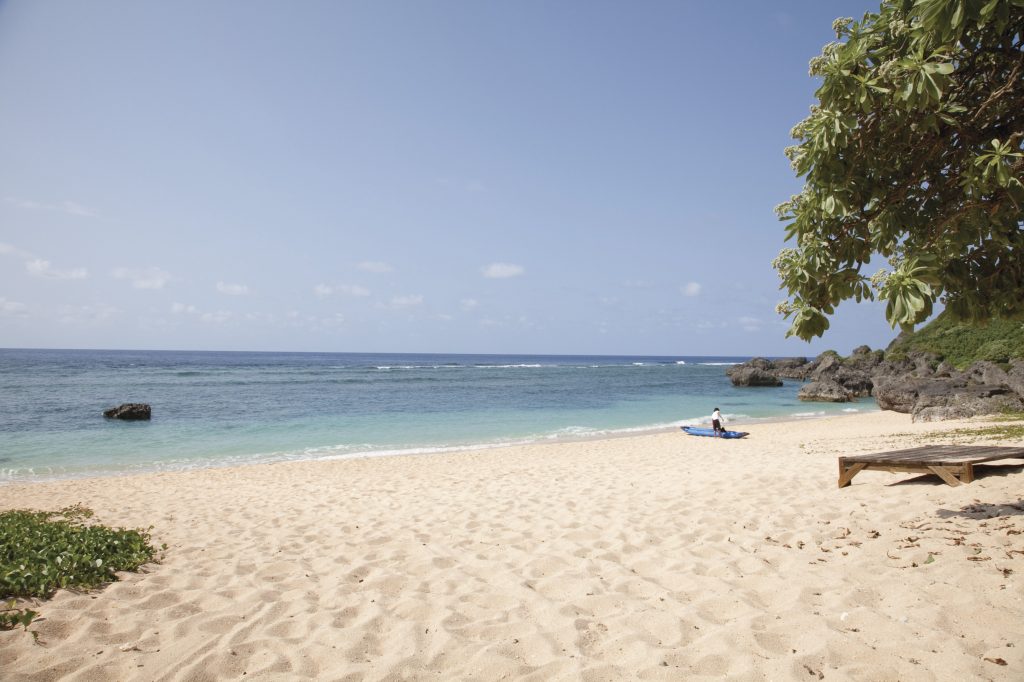
Boraga Beach
Boraga Beach is a great spot if you want an active day by the sea. It is possible to rent equipment, like kayaks, or book tours. There is also a swimming pool, which can be accessed against a small fee, if you prefer that over the sea.
Facilities: Showers, Toilets, Parking, Swimming pools
Photo © OCVB
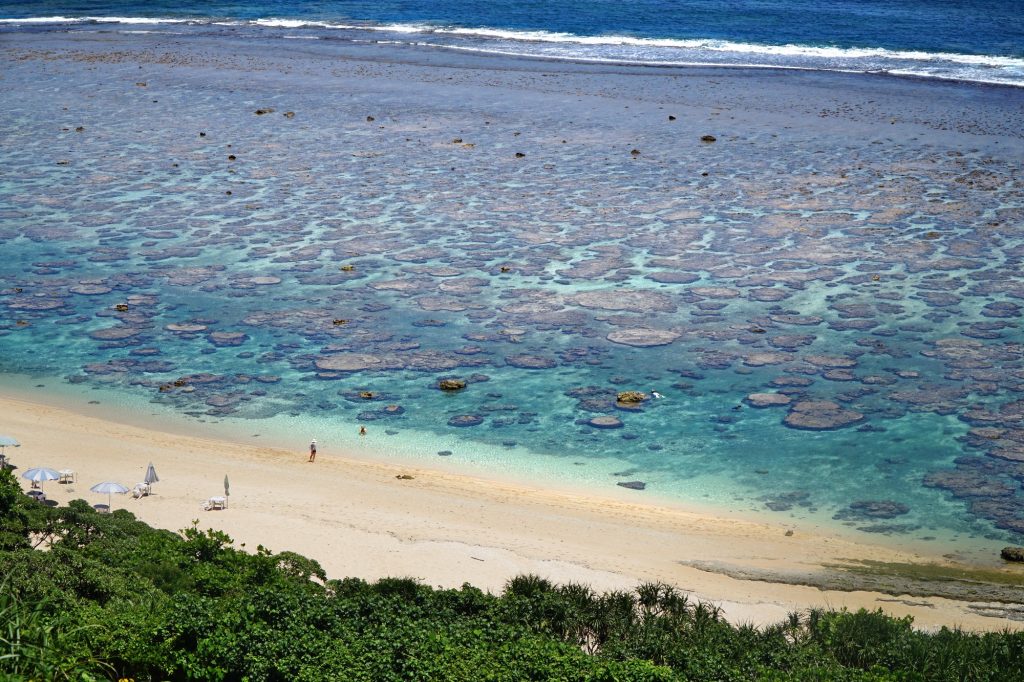
Yoshinokaigan
The Yoshino Coast is located on the eastern tip of the island, with the beach facing north-east. The beach is protected by a coral reef, so there are few waves and the sea is calm. At high tide it is a great place to snorkel between the corals, however at low tide the water is too shallow for snorkeling and there is risk of damaging the corals.
Facilities: Showers, Toilets, Parking (paid).
Photo © touristinjapan.com
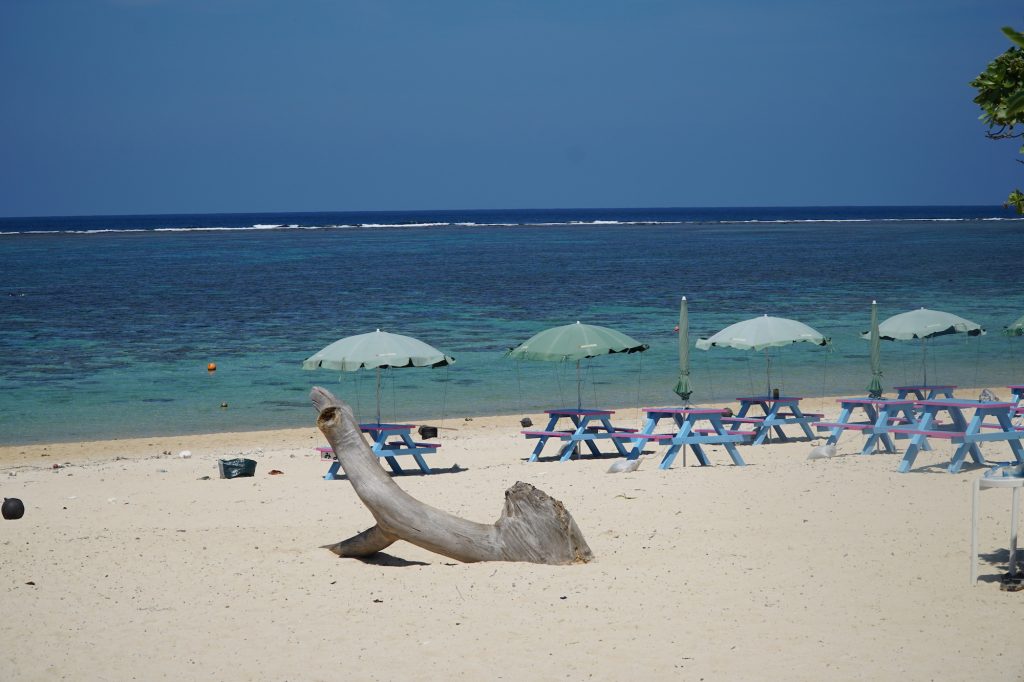
Aragusuku Beach
Aragusuku beach is located on the eastern tip of Miyako island. The beach is faced north-northeast and like the Yoshino coast it is protected by a coral reef, shielding it from big waves. At high tide it is a great place for beginners to snorkel, as there are plenty of coral and fish on low water. There are also beach chairs and tables – some free of charge. It is possible to rent snorkeling equipment on the parking lot.
Facilities: Parking, Changing rooms, Gear rental.
Photo © touristinjapan.com
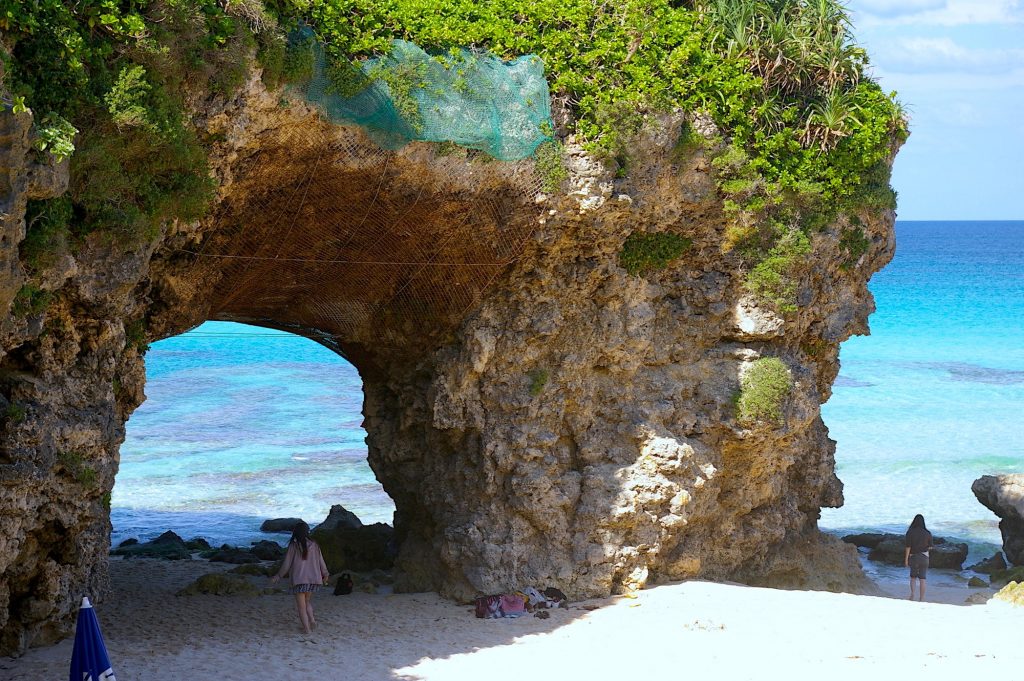
Sunayama Beach
This beautiful white beach, with it’s crystal clear, blue water, takes its name from the sand dune “mountain” which is also found here.
There is a fascinating “gate cliff” on the beach, which gives it a unique look.
Sunayama beach on the northern part of the island is no secret location, and is well-visited all season.
Facilities: Showers, Toilets, Parking.
Photo by Nao Iizuka. CC BY 2.0.
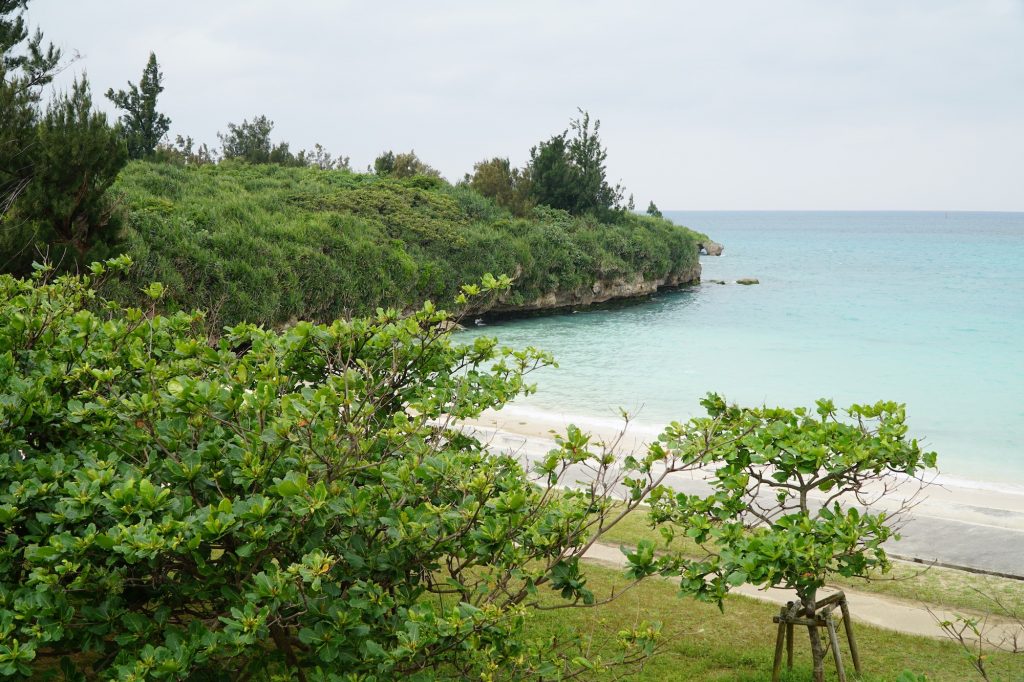
Painagama Beach
Painagama beach is located conveniently close to the city of Hirara. While it isn’t the most beautiful of all the beaches in Miyakojima, it is very pracpaitical if you live in the city. There is a swimming area which is equipped with nets to protect swimmers from poisonous jellyfish. There is also a vinegar emergency kit available on the beach in case of jellyfish stings. The beach is located close to the harbor, so you should stay within the marked area in the water.
Facilities: Showers, Toilets, Parking.
Photo © touristinjapan.com

Sunset Beach
With a stunning view of Irabu Bridge, Sunset Beach just outside Hirara city, is the perfect place to view the sun set into the sea. Come here just before sunset to enjoy a last swim of the day, before watching the sunset from the beach
Facilities: Showers, Toilets, Parking.
Attractions of Miyako Island
Miyako Island has a lot of attractions to keep you entertained when you aren’t out enjoying the beautiful beaches. Especially worth mentioning is Higashi-hennazaki cape, Shimajiri Mangrove, the botanical garden and of course you must take a tour of the famous bridges. Below is a more complete list of attractions around the island.
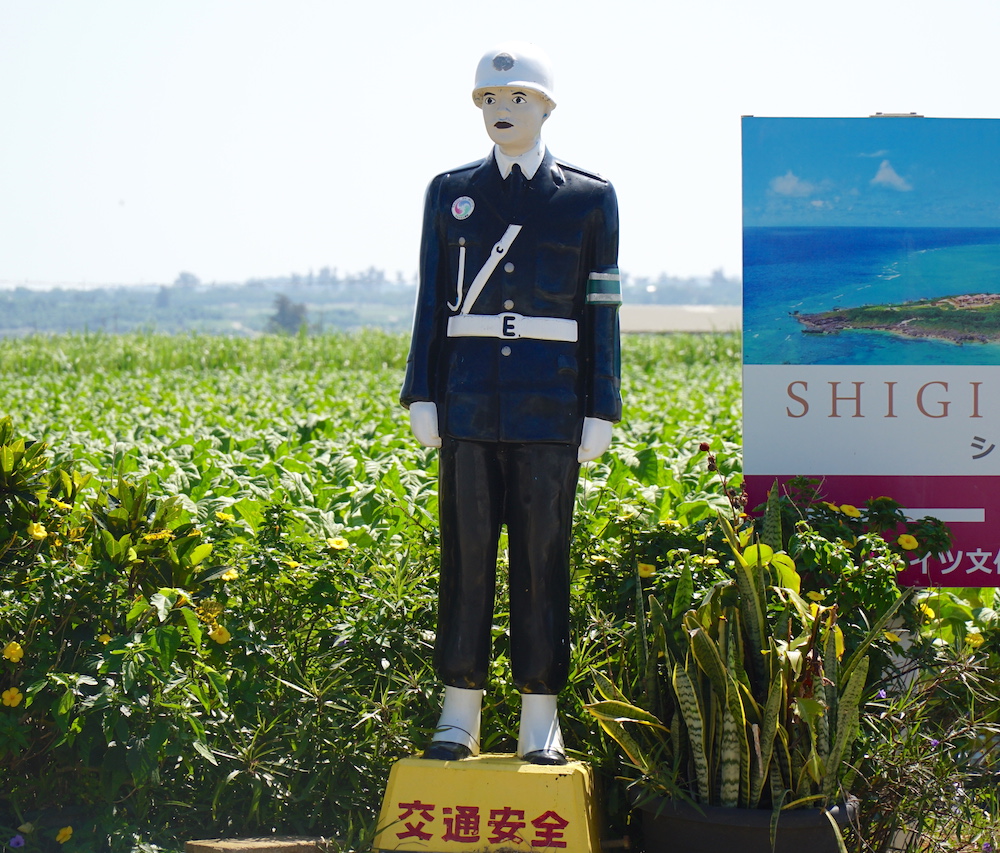
Mamoru-kun Police Officer statues
Across the islands of Miyakojima are 19 statues (or dolls) shaped as full-sized policemen in uniform. The statues are placed at dangerous intersections to remind islanders to drive carefully. While the figures look similar at a glance, they are actually all unique with each their facial designs. It’s a fun game trying to locate all 19.
Photo © touristinjapan.com
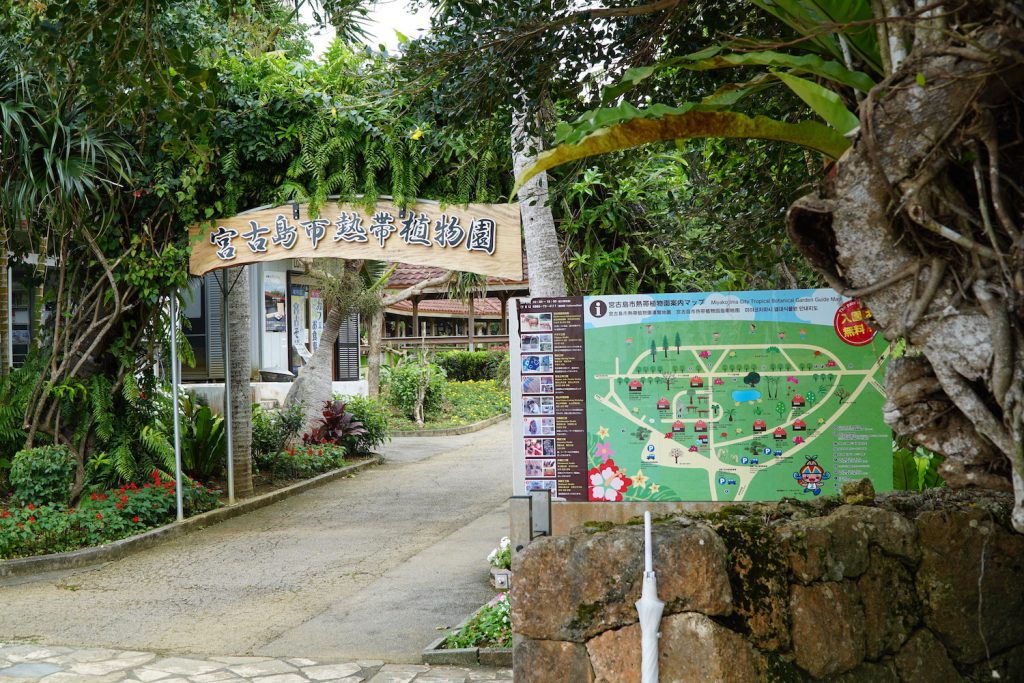
Miyakojima Botanical Garden
This 120,000 m² large botanical garden was esablished in the 60’s. The garden boasts 1’600 species of plants from all over the world. Across the garden is spread a large number of local crafts workshops, which work to preserve Miyako culture. You can experience traditional fabric production, wood carving, ceramic works etc. The garden is completely free to enter.
Photo © touristinjapan.com
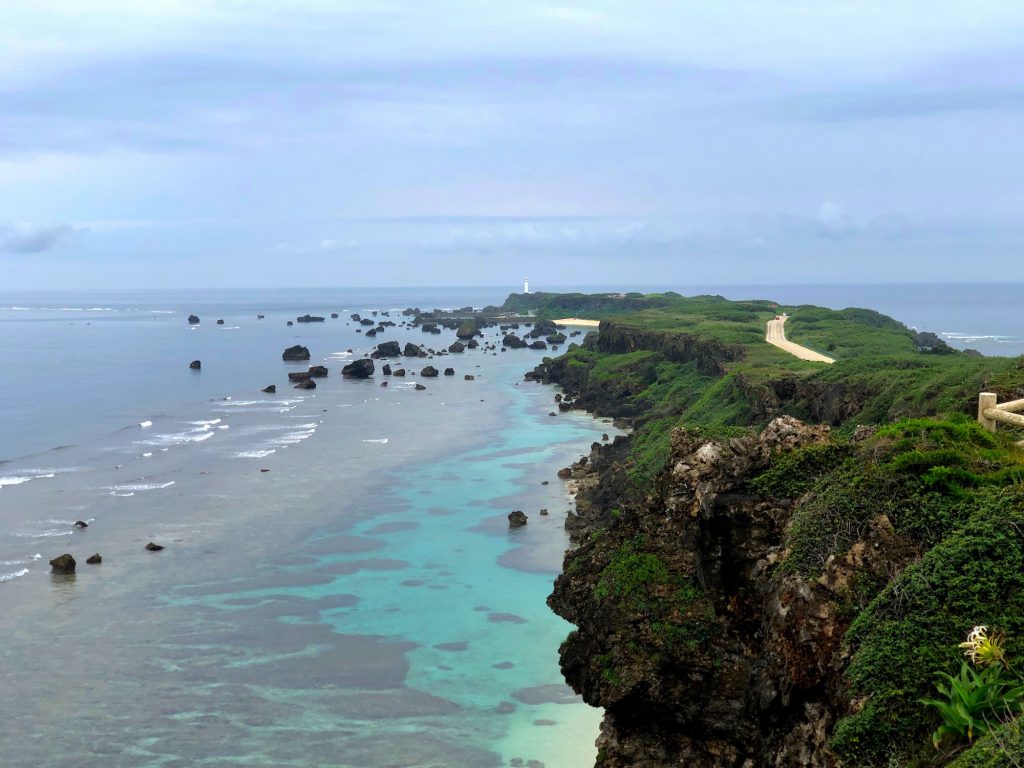
Higashi-hennazaki
Higashi-hennazaki is a 2km long, narrow cape which extends out of the eastern side of Miyako Island. The cape has the Pacific Ocean on one side, and the East China Sea on the other. Along the coast line of the cape are large rocks, scattered in the mesmerizing blue water. At the tip of the cape is an elegant, white lighthouse. The cape is designated a national place of scenic beauty. Read more
Photo © touristinjapan.com
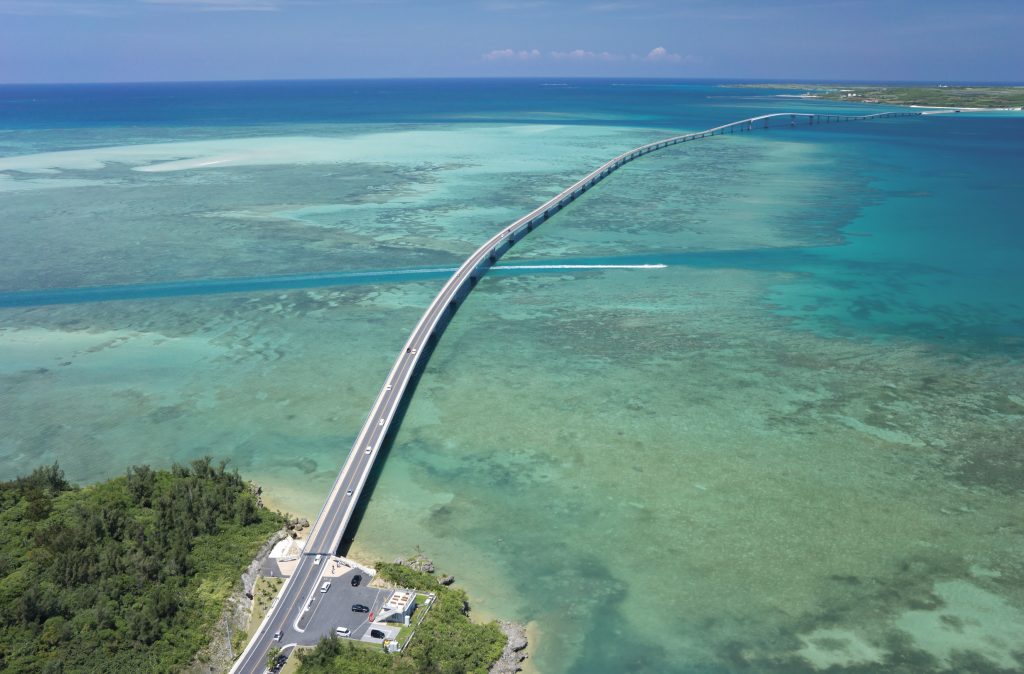
Bridge viewing
Miyakojima is a group of islands, most of which are connected by magnificent bridges. The three large bridges, Ikema Bridge, Irabu Bridge and Kurima Bridge are famed for their beauty and elegant design. It is common, when visiting Miyakojima, to make a “bridge tour” where you see and cross all three majestic bridges in one day. Read more
Photo © OCVB
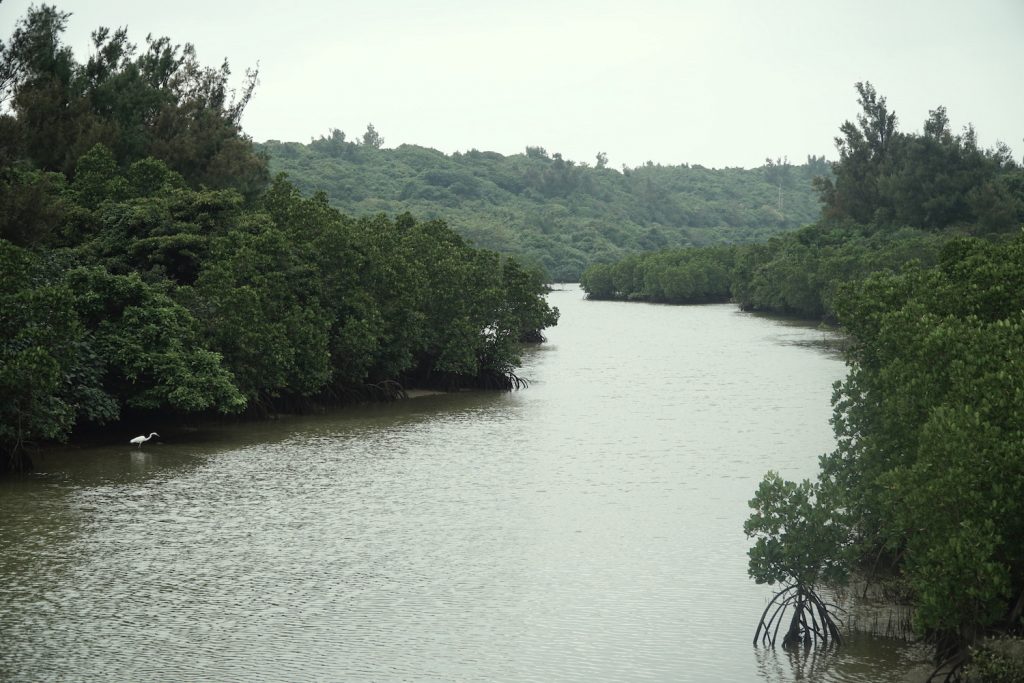
Shimajiri mangrove
A beautiful Mangrove forest, located on the northern “arm” of Miyako island. There is a nice footpath which makes it possible to enjoy the beautiful nature and rich animal life of the mangrove. There are high chances of seeing mudskippers and herons.
Photo © touristinjapan.com
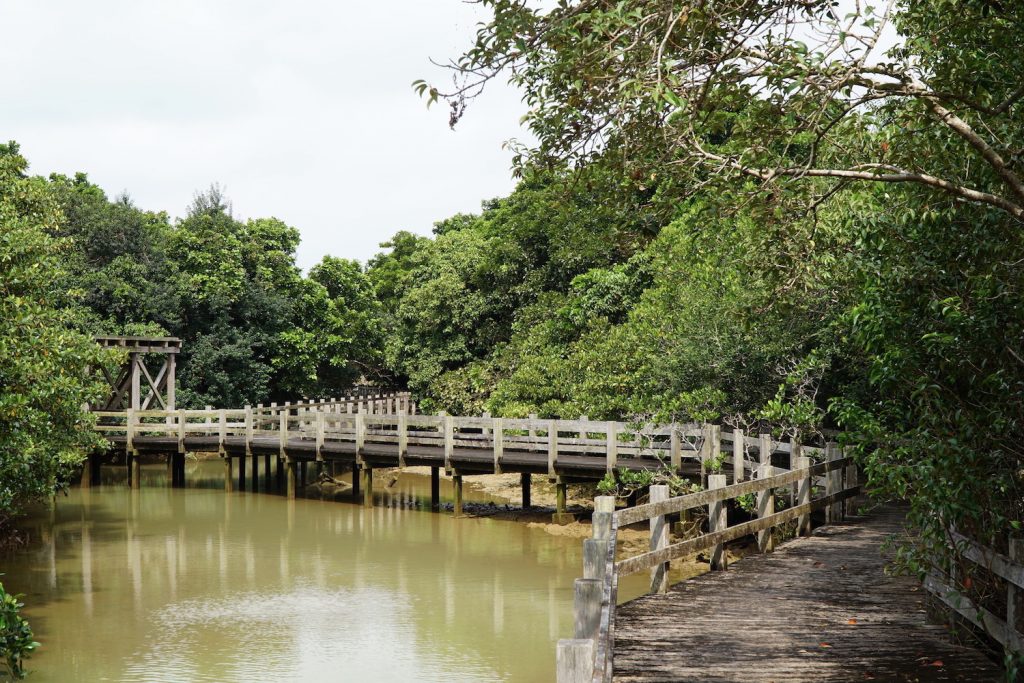
Upuka Utaki mangrove
A smaller mangrove forest located on the western side of Miyako Island. There is a short board walk through the mangrove. By the parking lot there is also a map of an interesting (however unkept and rarely used) walking route between some local religious sites.
Photo © touristinjapan.com
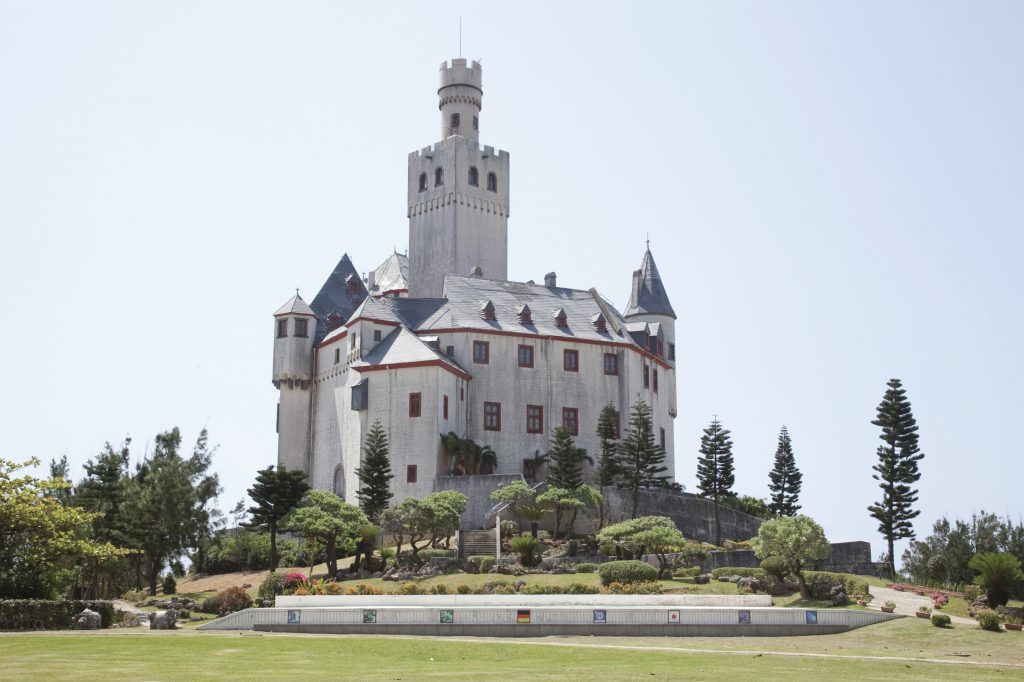
Ueno German Culture Village
On the southern coast of Miyako Island there is a German culture park, complete with a fake castle, “schlager” music and endless cheesy references to German culture. Inside the castle is a museum about Germany – and there is even a section of the Berlin wall on display. The park has come to exist as a result of a German shipwreck in 1873. The islanders saved the German sailors, and the German emperor was so thankful that he had a monument errected. Today, the location of the monument has turned into a kitschy German theme park. Read more.
Photo © OCVB
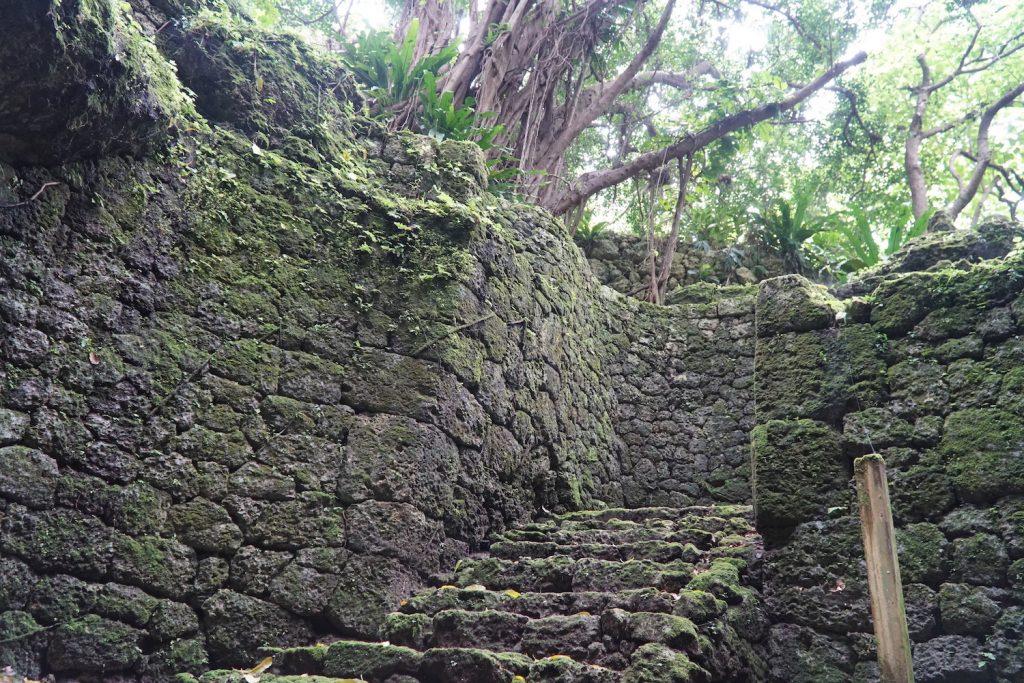
Yamato-ga historic well
Historic well located by Hirara city. The well is believed to have been dug in 1720 and was supposedly used exclusively by royals and government. The well is surrounded by a circular stone construction, demonstrating the great masonry skills of the time. Stones and walkway are covered in moss and surrounded by large banyan trees, creating a really unique atmosphere.
Photo © touristinjapan.com
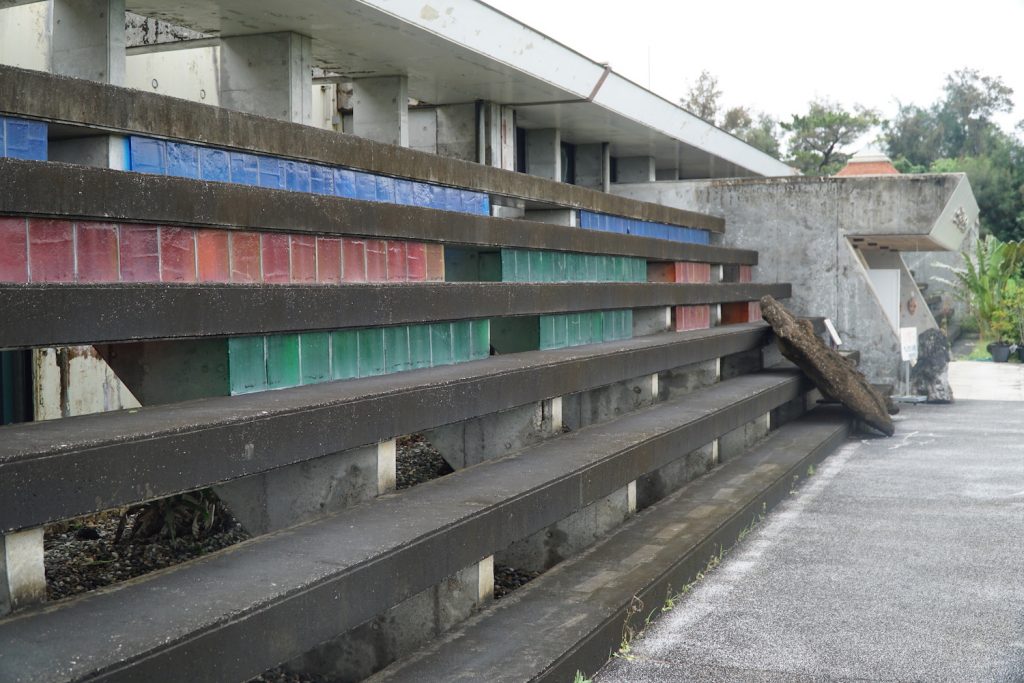
Miyakojima City Museum
A small museum of Miyakojima with two sections – Miyako history and Miyako Nature. The museum is old and worn out, but the historic section has some quite interesting displays about life on the Miyako islands. Select texts have English translations next to them.
Photo © touristinjapan.com
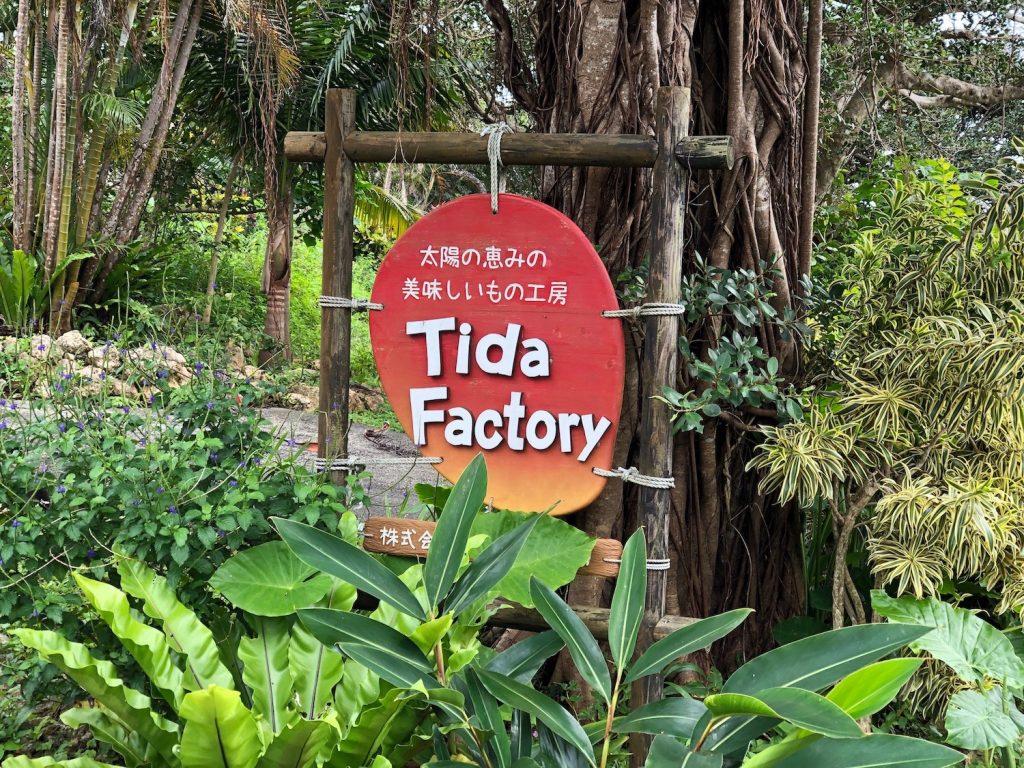
Tida factory
A fruit a vegetable producer, specially known for their Miyako mango. There is a small cafe attached to the factory. The cafe sells everything mango – ice cream, juice, smoothies etc.
Photo © touristinjapan.com
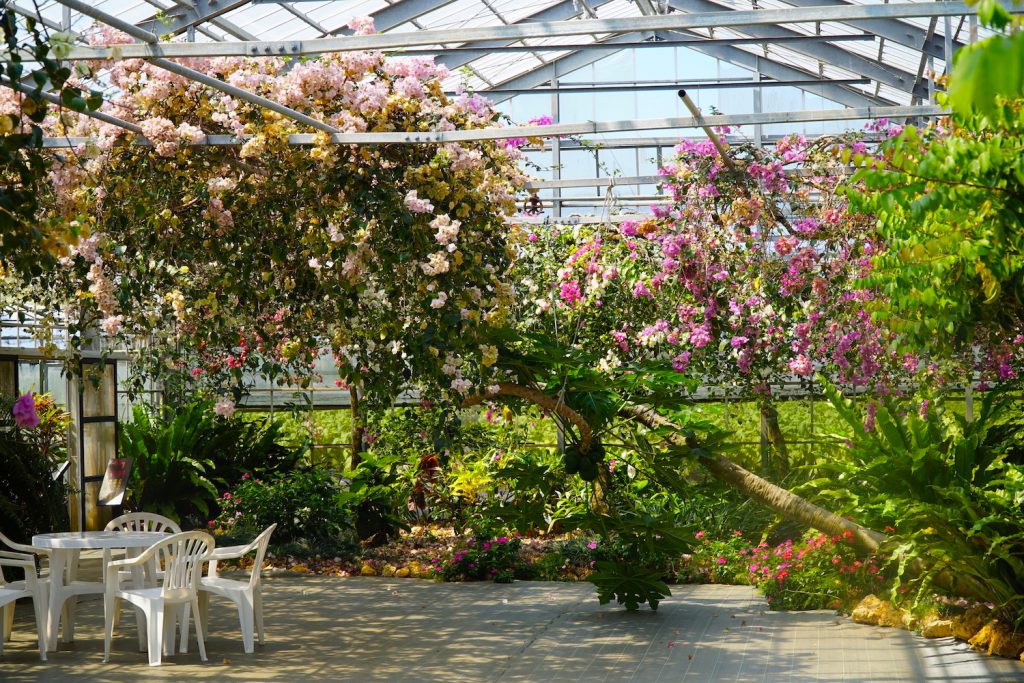
Utopia Farm
A fruit and flower farm which is open for tourists. It is possible to walk through parts of the green houses and enjoy the many types of hibiscus flowers and fruit trees. There is a decent sized cafe attached were you can get ice creams, smoothies etc. made with their delicious fruit.
Photo © touristinjapan.com
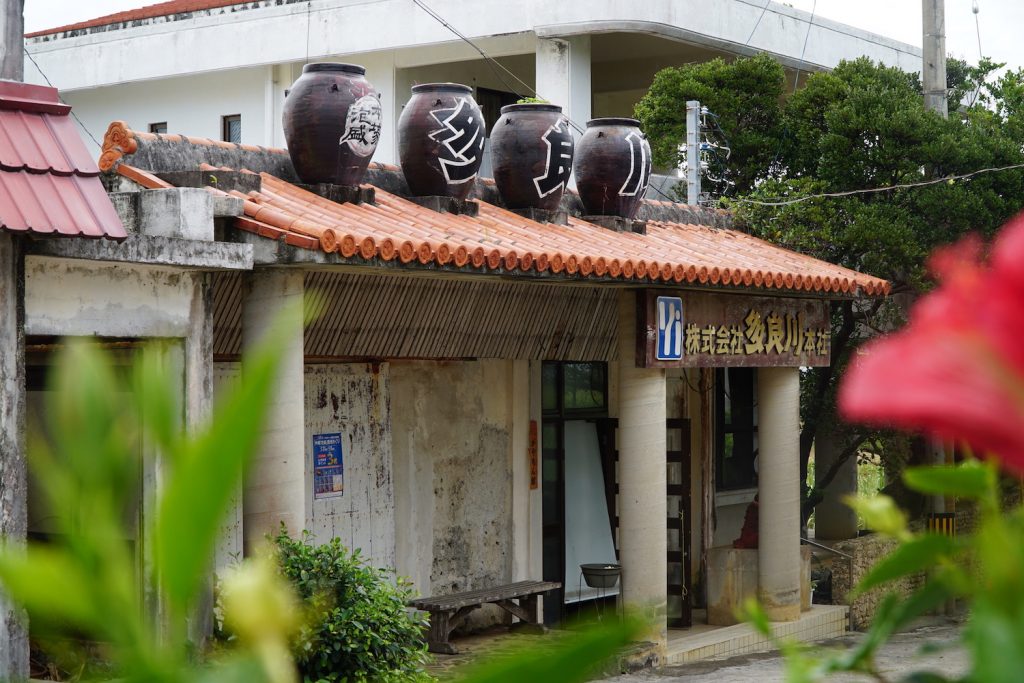
Taragawa Awamori Brewery
At the Taragawa Awamori brewery it is possible to experience the production of authentic Awamori – an Okinawan type of Sake. There is also a shop where you can taste and buy their award-winning products. When Awamori is aged more than 3 years it is called kusu, meaning “old licquor”. The Kusu made at Taragawa is especially delicious.
Photo © touristinjapan.com
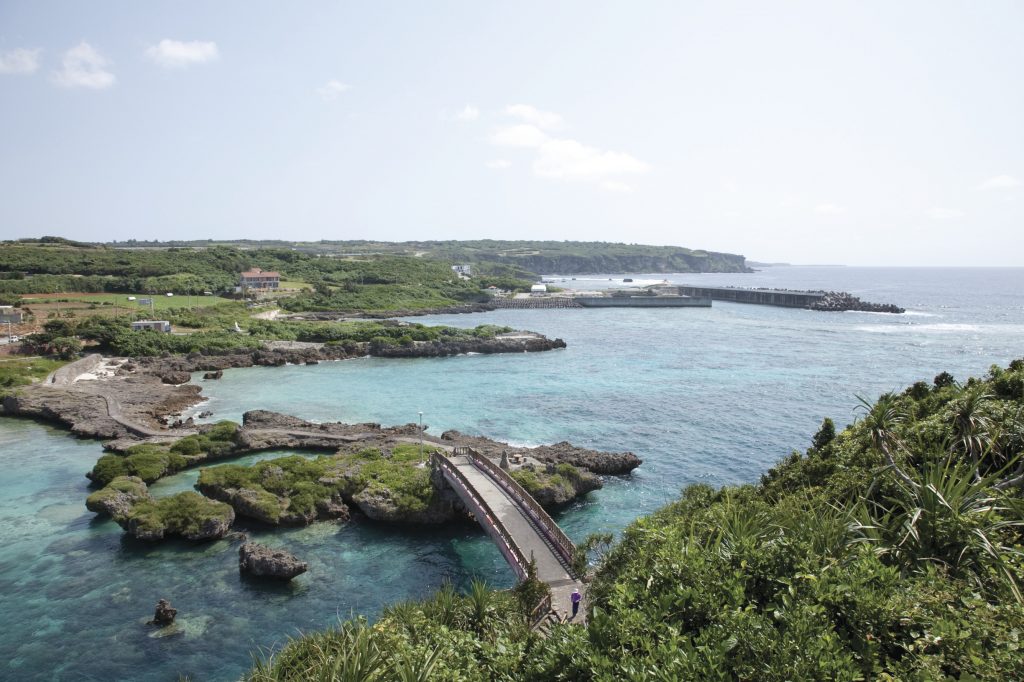
Imgya Marine Garden
A stunning, protected beach and snorkeling area. The area is almost closed off from the sea, making the water unusually calm and well suited for snorkeling. The lush, green islands and hills surrounding the area have walking paths with amazing views of the cove and the sea.
Photo © OCVB
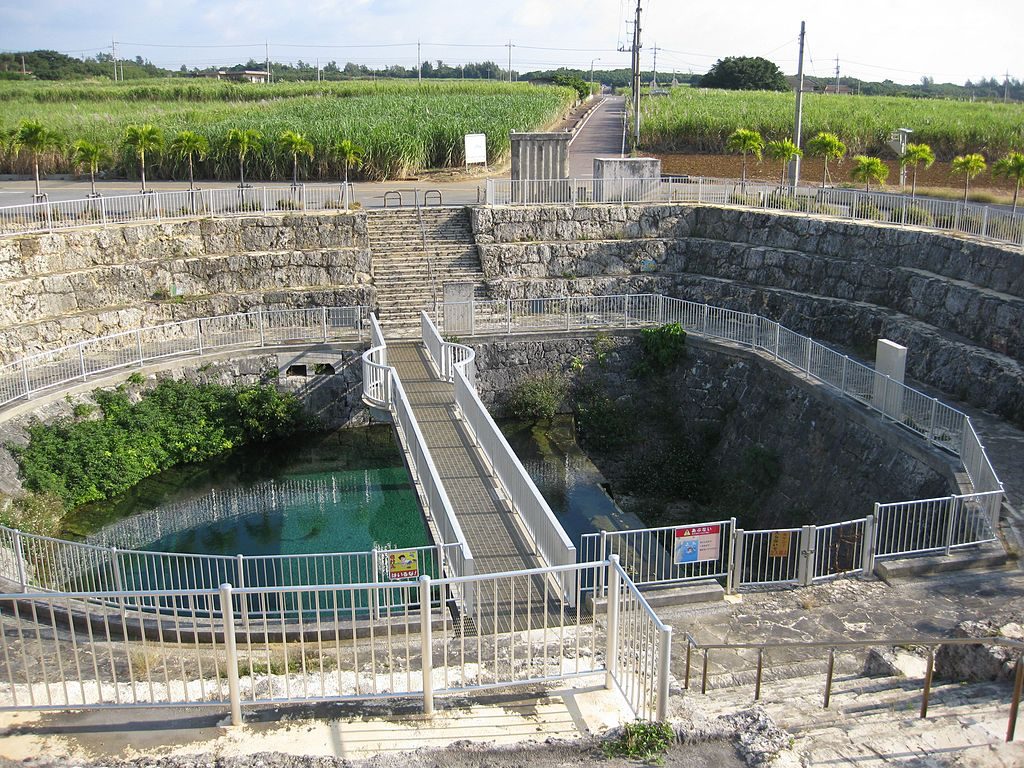
Miyakojima Underground Dam Museum
An interesting museum demonstrating the importance of water on this remote island. The museum shows the concept of the underground dam – a construction where huge underground walls keep ground water from moving into the ocean.
Photo by Ray_go. CC BY-SA 3.0.
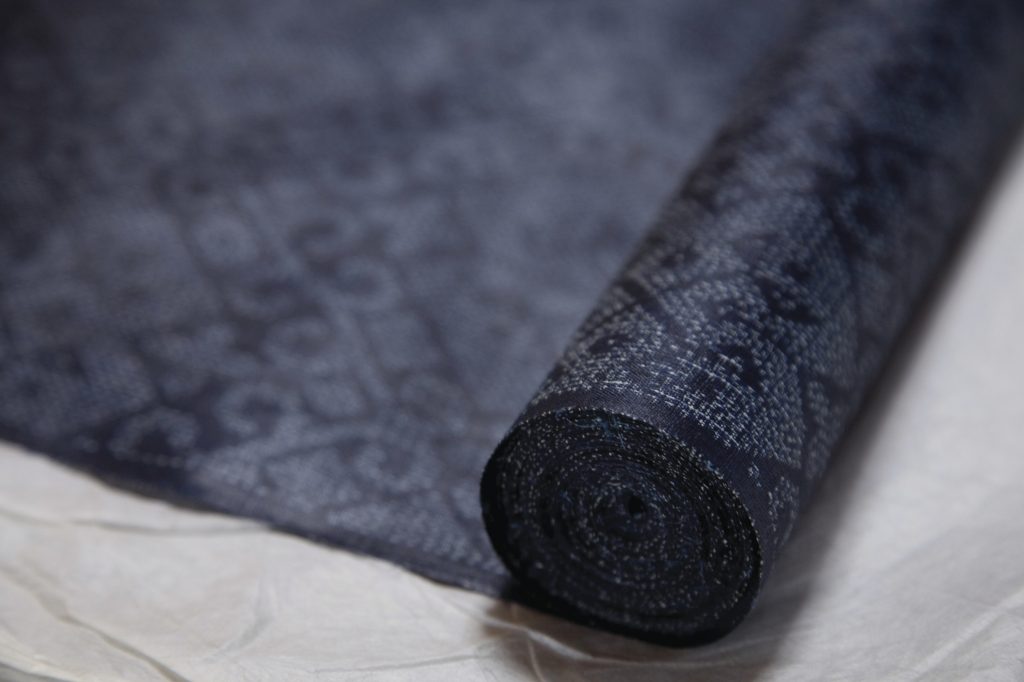
Miyakojima Traditional Crafts Center
Miyako-Jofu is a traditional Miyako fabric. At the crafts center, the weaving association is housed, and it is possible to observe the production process of Japans finest cloth. Miyako-Jofu is famous across Japan for it’s (often) blue color, elaborate patterns and fine mesh.
Photo © OCVB
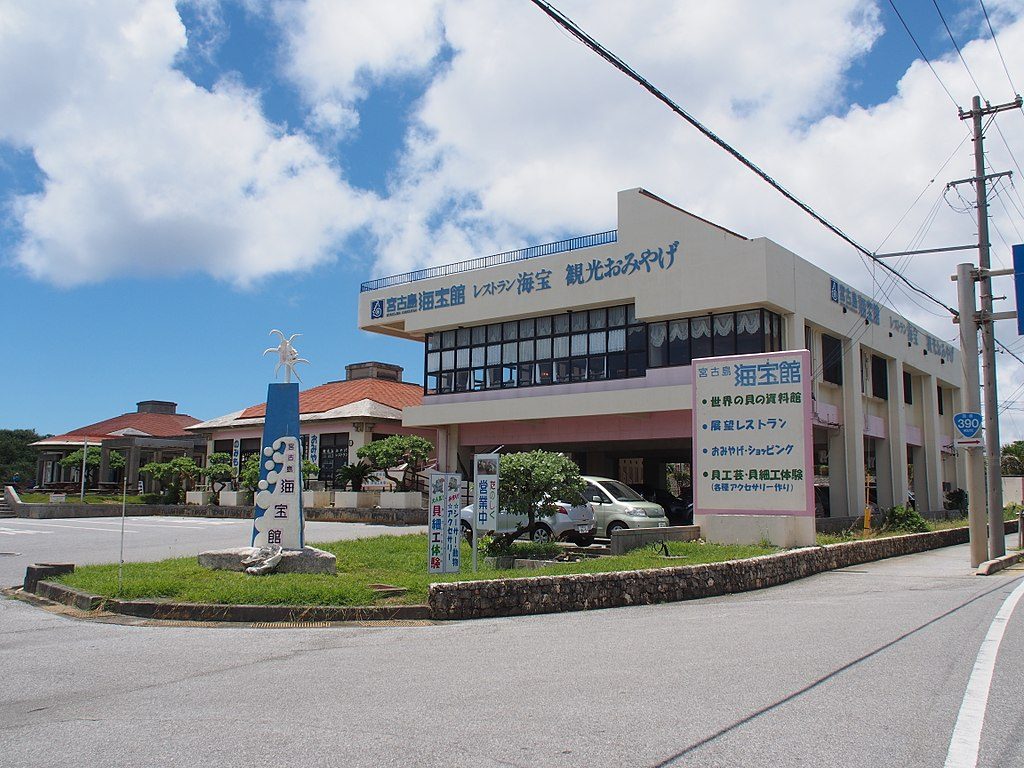
Miyakojima Seashell Hall
Interesting collection of unique and colorful sea shells from around Miyako.
Photo by Paipateroma. CC BY-SA 4.0.
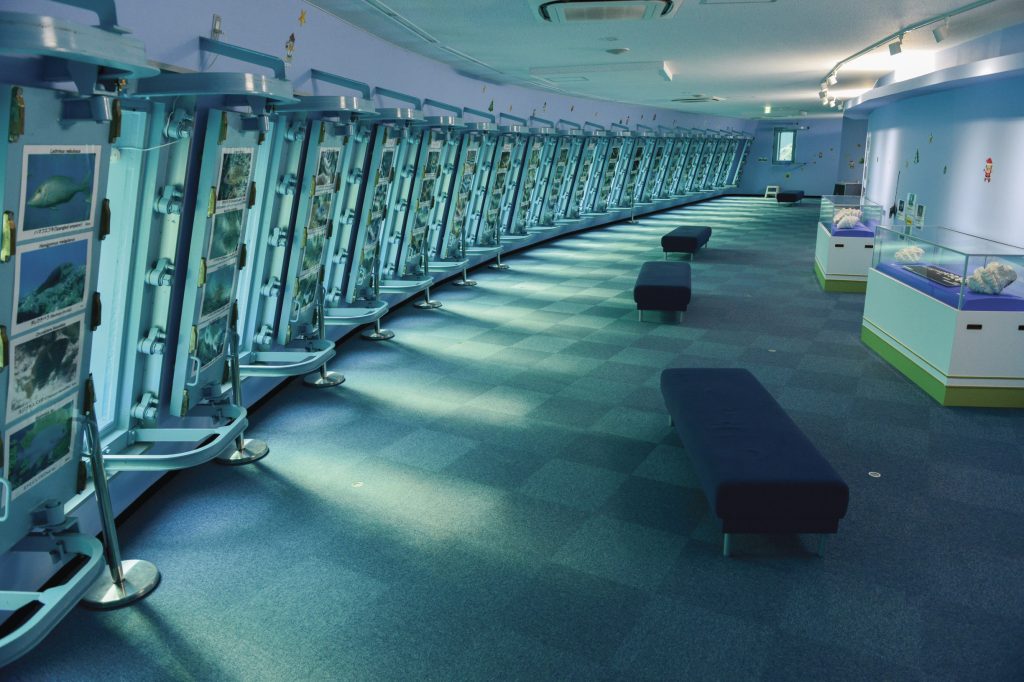
Miyako Island Aquarium
If snorkeling or diving isn’t really your thing, but you still want to experience the magical sea life of Miyakojima, then head to Miyako Aquarium. Here 24 large windows are placed in an under-water bunker out in the sea, so you can enjoy the real, untouched marine life. It is a very unique experience if you aren’t used to diving.
Photo © OCVB

Snow Salt factory and shop
A Miyako salt factory, producing the unusual “snow salt”. Snow salt is simply salt in powder form. In Miyakojima the salt is made from salty groundwater which is pumped up. At the factory there is a display about the production process and a shop selling unique salt products – including snow-salt ice-cream.
Photo © touristinjapan.com

Sun Pillar
The sun pillar is part of Mariko Mori’s “primal rhythm” art installation. At winter solstic, the sun will be exactly over the tip of the pillar, which is supposed to cast it’s shadow on a floating, LED lit “moonstone” in the bay. The pillar is made of a material which gives it a pearly and alien look. The moonstone, which was supposed to change colors with the tidal movements, appears to have never been installed.
Photo ©
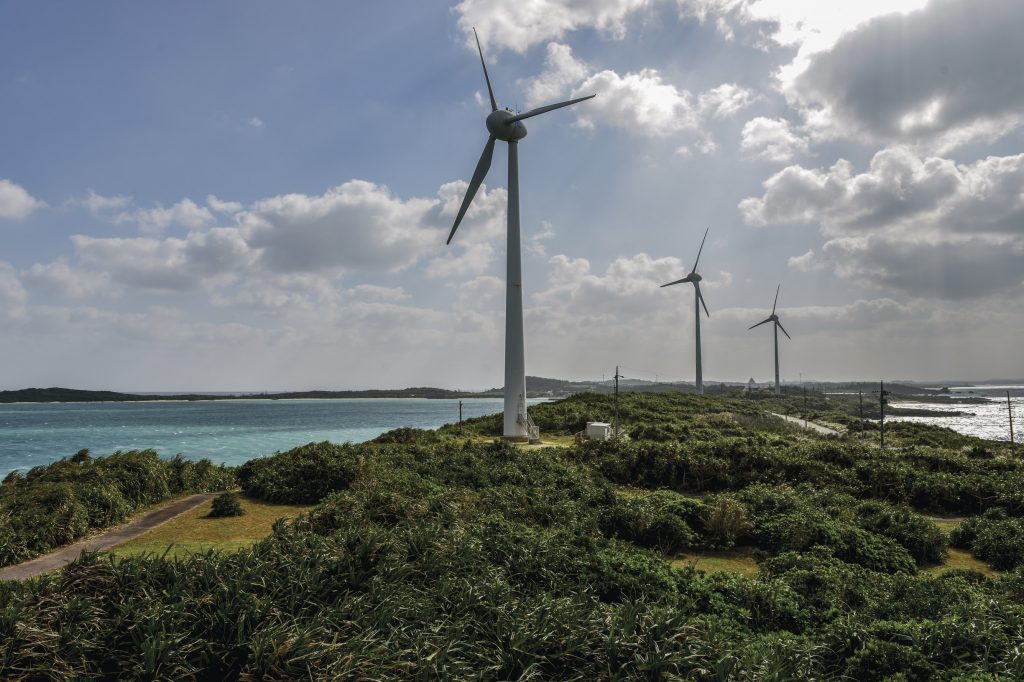
Nishihenna Cape
A long, beautiful cape extending from the northern tip of Miyako island. Three large wind turbines are installed on the cape, harvesting the strong winds blowing across the sea. There are parking facilities near the tip of the cape, making it easy to explore the beautiful landscape.
Photo © OCVB
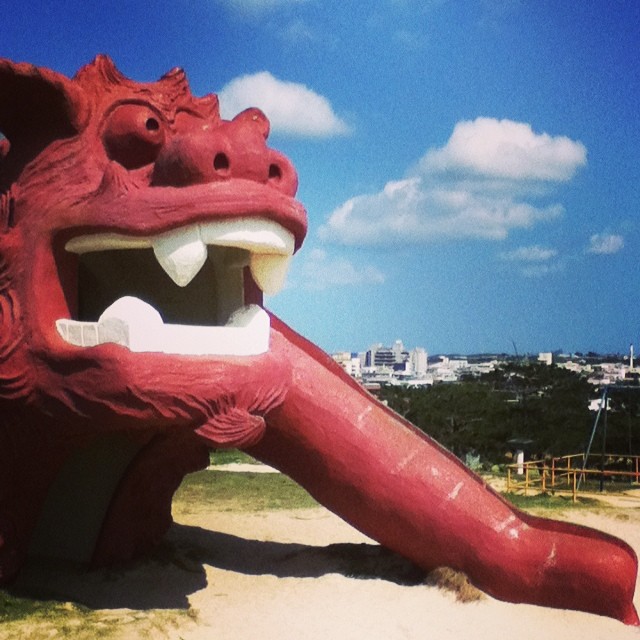
Kamamamine Park
Small city park located on the edge of Hirara city. Tourists mostly come here because of the slide which is shaped like a gigantic shisa lion in a playful pose.
Photo by Soho. CC BY-NC-ND 2.0.

Mega Solar Observatory
A viewpoint on the south-eastern part of the island, from where you can observe a newly installed 4MW, experimental solar power plant. An impressive look at a green energy production which helps preserve a clean and natural Miyako.
Photo ©
Yearly Events of Miyako Island
Miyakojima has many yearly events. Some events (especially sports) are widely known across Japan. Others, like the Paantu, is very local.
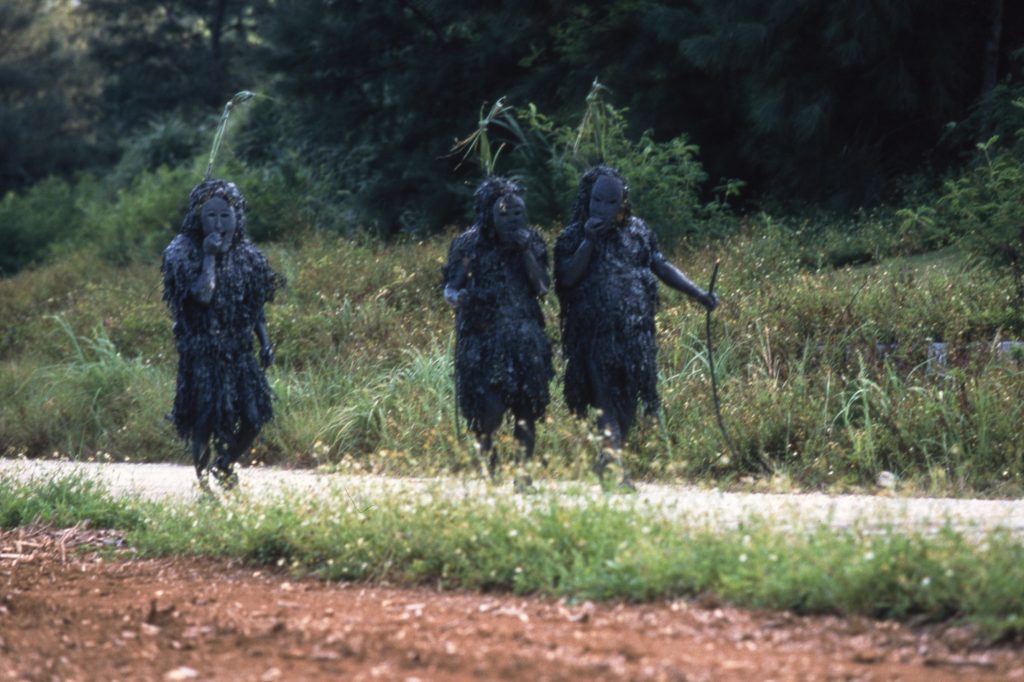
Shimajiri Paantu
The Paantu festival is unique to Miyakojima. On the ninth lunar month, three men emerge from the swamp, covered in mud, leaves and grass. In one hand they carry a stick, in the other a mask which covers their face. These three Pantu walk around town, smearing mud on people, houses and cars. Being touched with mud by a Pantu is supposed to give good fortune and protection for a year. For this reason parents try to have their children muddied, and new house owners hope to have their house muddied.
Photo © OCVB
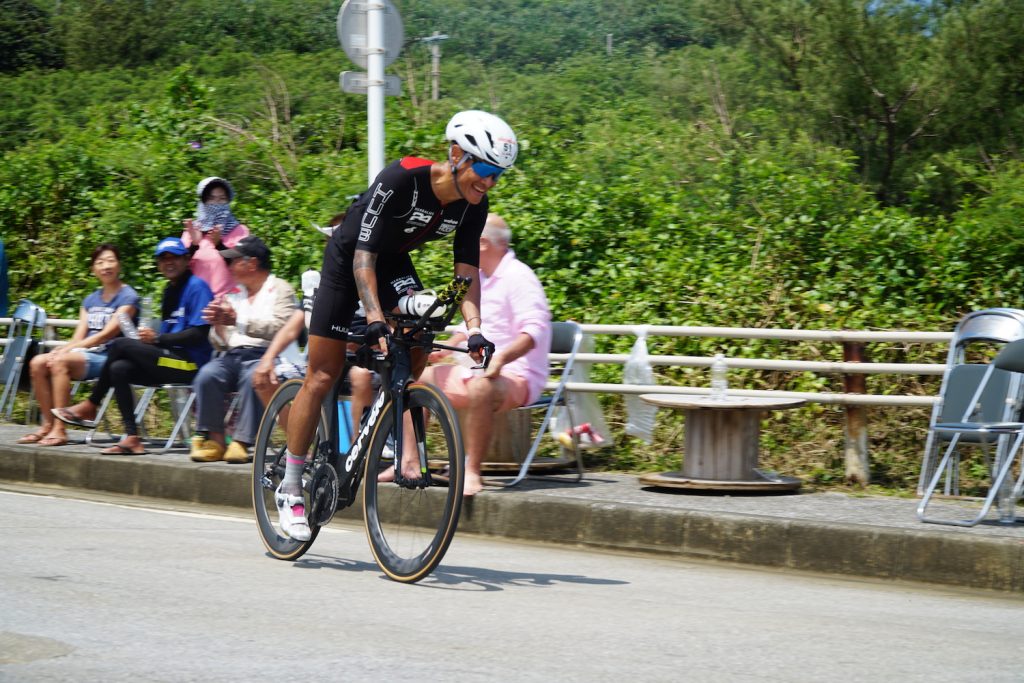
Strongman All Japan Triathlon
A yearly triathlon taking place on the Miyakojima islands during spring. The distances are extremely long, with 3km swimming, 155km cycling and 42km running. The race almost closes down the island for an entire day, with many roads being closed. Read more on the official website.
Photo © touristinjapan.com

Miyako Island Wide 100km Marathon
A long-distance running competition taking place on Miyakojima in January. Runners come from all over the world to participate in one of the three runs, 100km, 50km, 22km, 10km and 5km. Read more on the official website.
Photo ©
Restaurants of Miyako Island
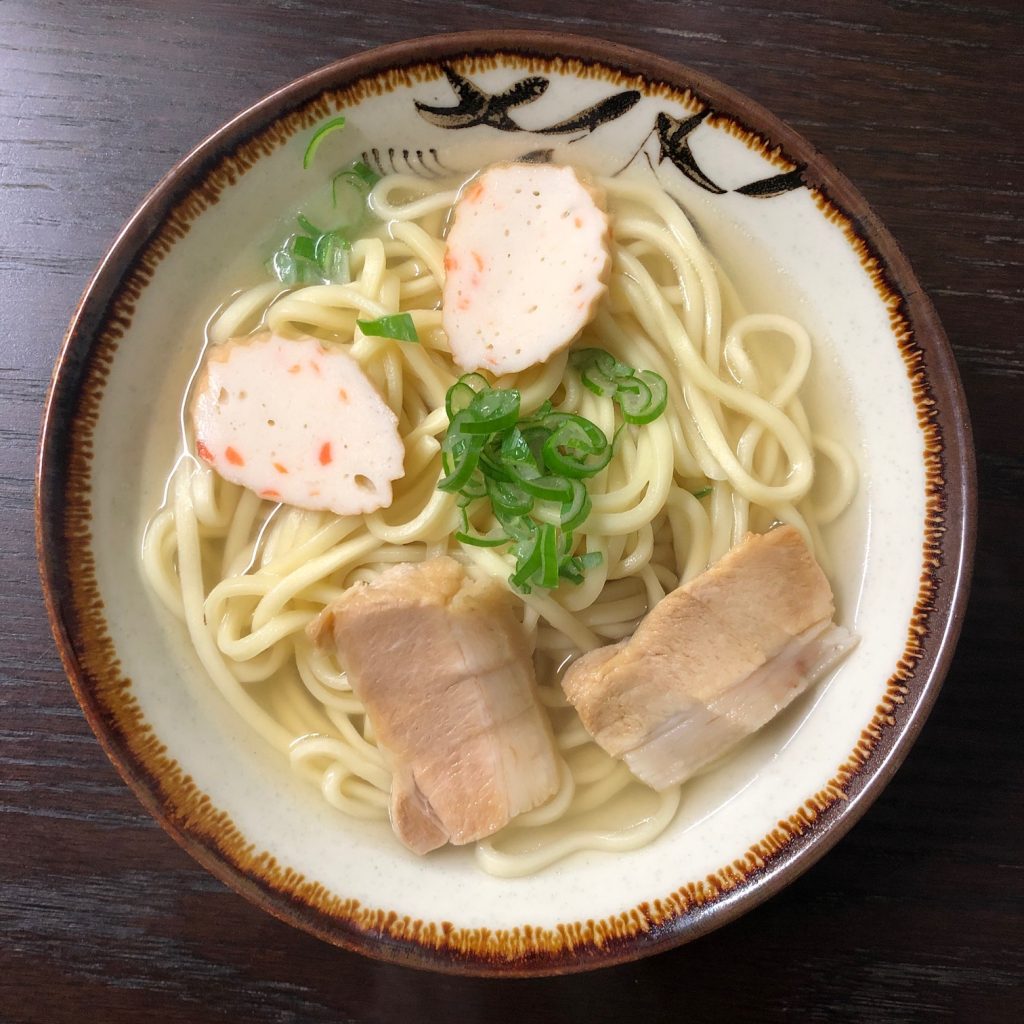
Miyakojima has a lot of great, local food you must try when exploring these pristine paradise islands. Miyako specialties you can’t miss are: Miyako Soba, Miyako Beef, Fresh mango and papaya, Mozuku sea weed, Goya chanpuru and of course a local awamori to wash it down. Don’t miss the local snow salt either!
- Maruyoshishokudou (miyako soba)
- Kojasobaya (soba, katsudon, curry…)
- Goya (izakaya with okinawa cuisine, including Goya dishes of course)
Look for more restaurants and cafes on Miyako island on tabelog.
Photo © touristinjapan.com
Accommodation of Miyako Island
Hotel Recommendations for Miyako island
Miyakojima Veronika (budget)
If you are looking to travel on a budget, then Veronika guest house could be something for you. The hotel is located a bit north of Hirara, away from the touristy areas. Prices are almost as reasonable as on the smaller islands. There are free bikes and free wi-fi available.
Book now
Hotel Sea Breeze Casual (mid-class)
Hotel Sea Breeze Casual is a nice 3-star mid-class hotel, located on the southern coast of Miyako island. The rooms are modern and clean. There is a pool, souvenir shop, restaurant and laundry facilities. It’s a great place to stay as a couple or a family, if you want to be near the sea.
Book now
Shigira Bayside Suite Allamanda (Luxury)
The beautiful 5-star hotel of Shigira Bayside has huge, amazing suites overlooking the east-china sea – some with private pools. The hotel has a private beach with snorkeling and canoeing. There is also a spa and an amazing restaurant, Maralunga.
Book now
Find more hotels in Miyakojima
Tours and Experiences of Miyakojima
- Stargazing & Nighttime Jungle Tour at Miyakojima
- Pumpkin Cave Tour with Snorkeling or SUP or Canoeing
- Half-day or 1-day snorkeling with SUP or Canoeing
- Snorkeling with Turtles in the Blue Sea of Miyakojima
- SUP Experience at a breathtaking beach on Miyakojima
- Experience the Natural Aquarium of Miyakojima sea
- Caving in Miyakojimas Pumpkin Cave
- Miyakojima Adventure: SUP or Canoe, snorkeling, caving
Getting there
By plane: fly into Miyakojima airport (MMY) on the main island. There are regular flights from Tokyo, Osaka, Nagoya, Fukuoka and Naha.
By car: the best way to get around Miyakojima is by car. It is highly recommended to rent a car – for example from the airport.
By bus: There are busses on the Miyako islands, but they are not well documented nor frequent. If you must take a bus, then you can find information about the stops kotsu-okinawa.org.
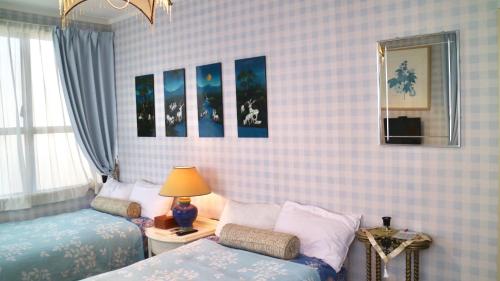
| Miyakojima Veronika |
| ☆☆ |
| Find prices |

| Hotel Sea Breeze Casual |
| ☆☆☆ |
| Find prices |

| Shigira Bayside Suite Allamanda |
| ☆☆☆☆ |
| Find prices |

